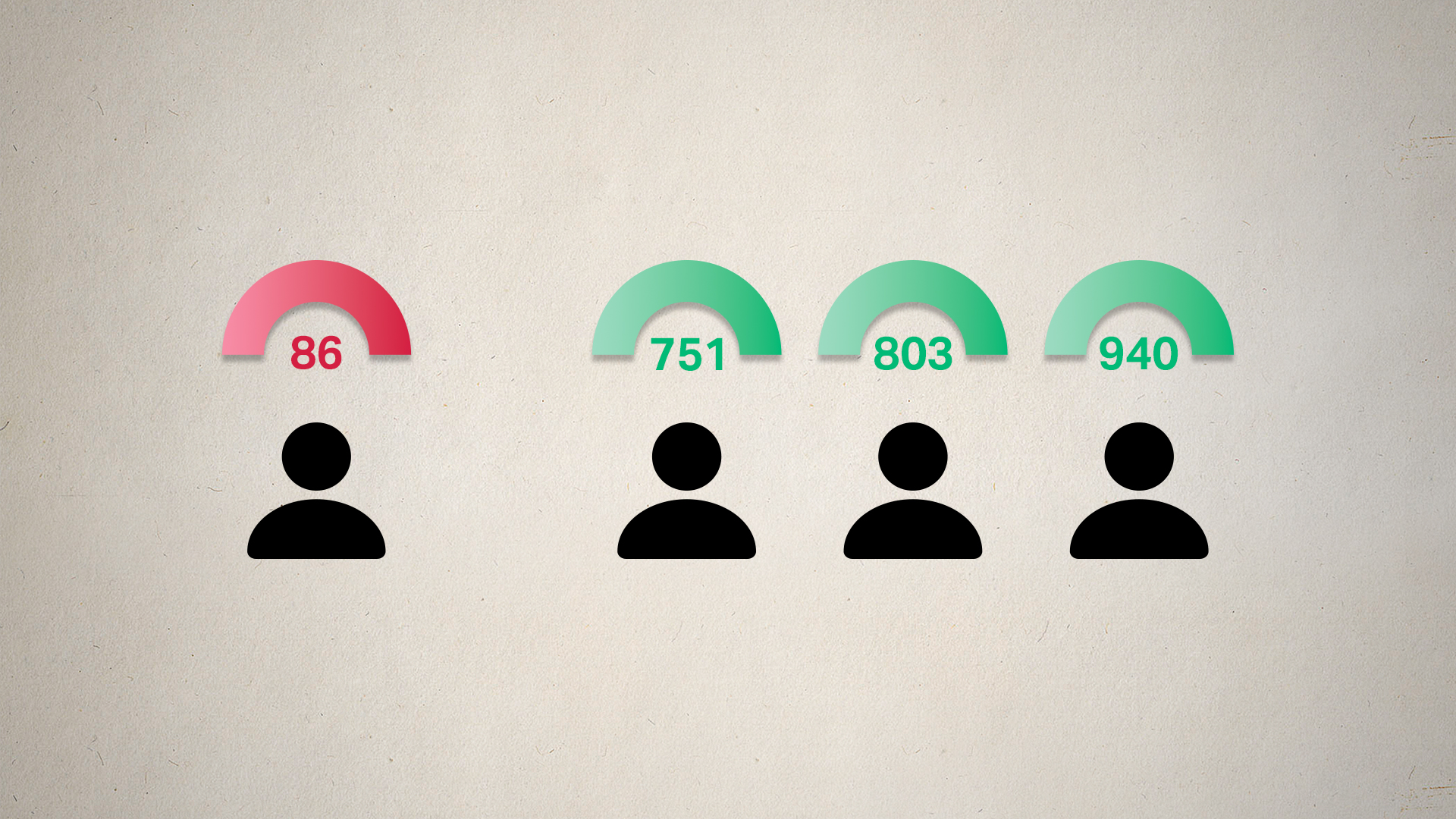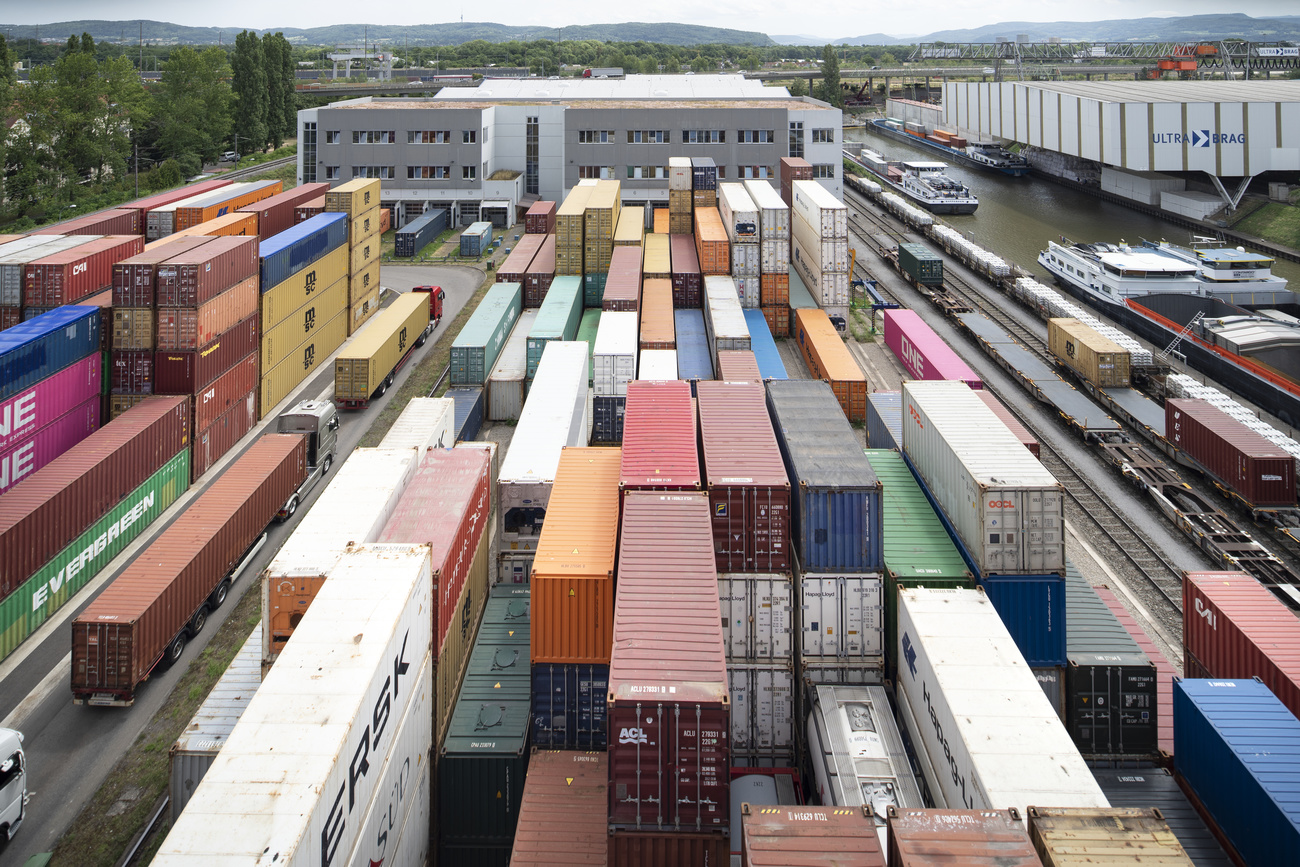
Swiss economy facing ‘high downside risks’

The Swiss economy will continue to develop at a rather subdued pace in 2025, according to economic researchers at ETH Zurich (KOF). The forecasts are also subject to considerable downside risks, they say.
+Get the most important news from Switzerland in your inbox
Specifically, in its spring forecast for the current year 2025, the KOF expects real gross domestic product (GDP, adjusted for sporting events) to grow by 1.4%, the same as in the last forecast in December.
However, this is only based on the assumption that the international trade conflict does not escalate further, it said in a press release on Wednesday. Due to the geopolitical strategy of the new US administration, uncertainty is currently unusually high, it said. The increased trade policy uncertainty is having a particularly negative impact on the investment plans of Swiss companies and households.
Germany package helps
While the international trade conflict is slowing down growth, the expected fiscal stimulus in individual EU countries – particularly in Germany – should boost the economy, the KOF continued. This would improve the outlook for the Swiss economy. Accordingly, it is forecasting GDP growth of 1.9% for 2026, which is slightly higher than the last forecast (+1.7%). With its latest GDP forecast for 2026, the KOF is also slightly higher than most other forecasters.
+ What lies ahead for Switzerland: an economic outlook for 2025External link
According to the KOF, the manufacturing industry, particularly suppliers to the defence industry, and industry-related services would benefit most from the fiscal programmes. This should stimulate investment in equipment in particular via foreign trade and indirectly also private consumption. Major infrastructure projects and fiscal stimulus from Europe should also directly or indirectly support construction investment.
Downside risks predominate
However, the KOF emphasised the high level of uncertainty surrounding the forecast. “As it is still unclear which of the trade policy measures threatened by the Trump administration to date will ultimately be implemented and which additional measures could still follow, the current forecast is subject to greater uncertainty than usual,” it said.
+ Swiss economics minister ‘ready to discuss’ with US on tariffs
In any case, analyses show that an expansion of the trade conflict could entail considerable downside risks for the local economy. The main downside risk is that the US government introduces further tariffs against other countries and products, including retaliatory tariffs as countermeasures.
The KOF sees a further risk in the fact that the fiscal stimulus in Europe will not be effective or will only materialise with a delay. In addition, geopolitical conflicts such as the war in Ukraine or the Middle East could escalate, impacting commodity prices and global trade.
Labour market and inflation
The KOF economists are relatively confident about the labour market – at least if the above-mentioned risks do not materialise in full. Employment and the number of people in work are likely to increase in line with GDP growth over the next few years, the KOF forecasts. The unemployment rate will also rise only slowly and will soon peak at 3%. The KOF also expects real wages to rise by 0.9% this year and 0.6% next year.
In terms of inflation, the Zurich-based economists are forecasting rates of 0.5% for this year and 0.6% for next year. Most recently (in February), it was 0.3% and has been below 1% for the sixth month in a row. Following the recent reduction in the Swiss National Bank’s (SNB) key interest rates by 25 basis points to 0.25%, the KOF does not expect any further interest rate cuts in the forecast period.
Translated from German by DeepL/ts
This news story has been written and carefully fact-checked by an external editorial team. At SWI swissinfo.ch we select the most relevant news for an international audience and use automatic translation tools such as DeepL to translate it into English. Providing you with automatically translated news gives us the time to write more in-depth articles.
If you want to know more about how we work, have a look here, if you want to learn more about how we use technology, click here, and if you have feedback on this news story please write to english@swissinfo.ch.

In compliance with the JTI standards
More: SWI swissinfo.ch certified by the Journalism Trust Initiative











































You can find an overview of ongoing debates with our journalists here . Please join us!
If you want to start a conversation about a topic raised in this article or want to report factual errors, email us at english@swissinfo.ch.